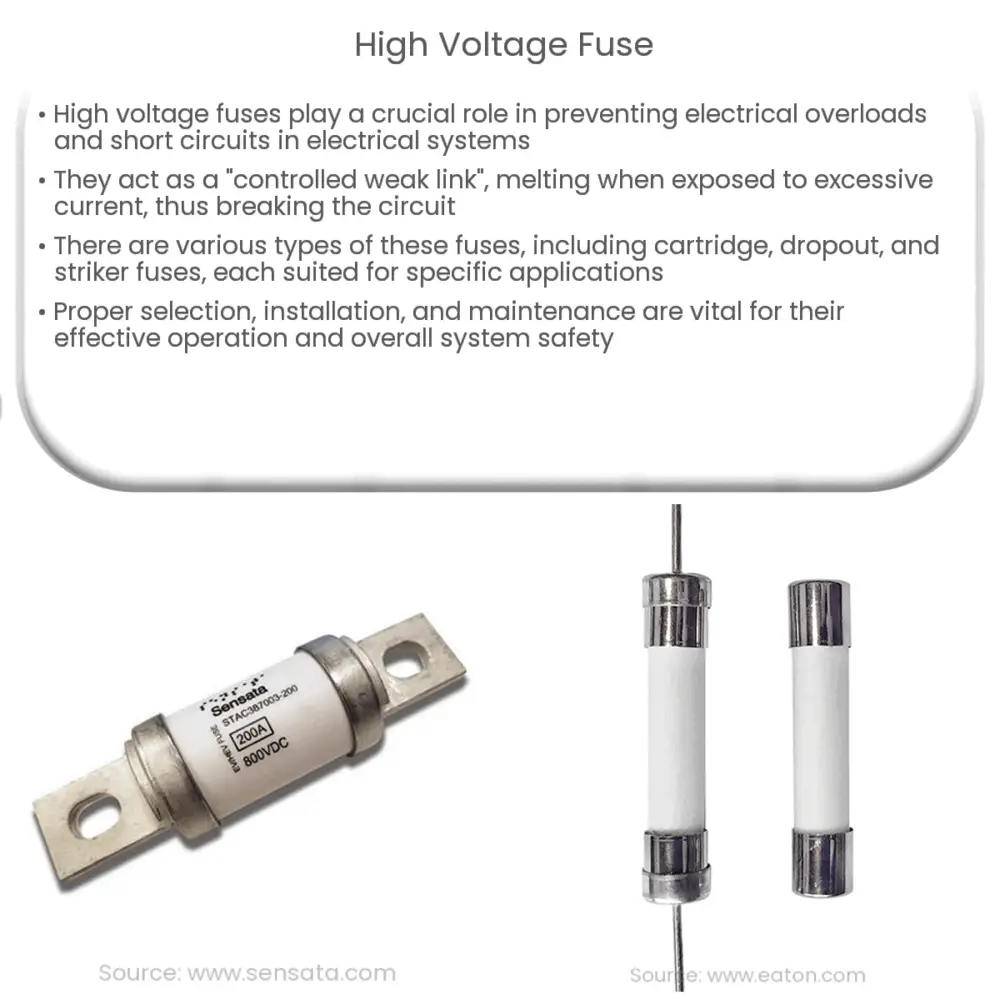Explore the role, function, and types of high voltage fuses. Learn about their selection, maintenance, and significance in electrical safety.

Understanding High Voltage Fuses: An Integral Component in Electrical Safety
High voltage fuses are an essential safety mechanism in electrical systems. They play a significant role in the prevention of electrical overloads and short circuits, which can potentially result in catastrophic damage to electronic equipment, and even cause electrical fires. This article delves into the world of high voltage fuses, exploring their purpose, functioning, and types.
The Purpose of High Voltage Fuses
The primary function of a high voltage fuse is to act as a protective barrier in an electrical circuit. It is designed to handle high levels of electrical current, typically more than 1000 volts. Once the current surpasses the fuse’s designated limit, the fuse reacts by interrupting the flow of electricity, thereby preventing damage to the associated electrical components and systems.
How High Voltage Fuses Work
High voltage fuses are essentially a ‘controlled weak link’ in an electrical circuit. They consist of a fuse link, which is a thin strip or wire made of a material that melts when exposed to excessive current. This fuse link is usually enclosed in a non-conductive casing to prevent accidental contact with the live parts. When the current exceeds the fuse’s rated capacity, the heat generated melts the fuse link, disconnecting the electrical circuit and preventing further damage.
Different Types of High Voltage Fuses
- Cartridge Fuses: These are cylindrical in shape and are available in different lengths and diameters. The fuse link in a cartridge fuse is completely enclosed, typically in a ceramic casing, providing reliable protection against overcurrents.
- Dropout Fuses: Also known as expulsion fuses, dropout fuses disconnect automatically when the current exceeds the limit. They’re commonly used in overhead feeders and transformers.
- Striker Fuses: These fuses have a spring-loaded mechanism that’s released when the fuse blows. The striker pin can be used to activate a microswitch or shunt trip, providing immediate indication of a fault condition.
Each type of high voltage fuse is designed for specific applications and systems, and the choice depends on several factors such as voltage rating, current rating, interrupting rating, and the physical size and location of the fuse.
The Importance of Correct Fuse Selection
Correct fuse selection is critical for maintaining the safety and reliability of high voltage systems. Incorrect selection can lead to inadequate protection, premature fuse operation, or failure to operate when needed. Therefore, it’s essential to consider the system’s specific requirements and characteristics when selecting a high voltage fuse.
Factors to Consider When Selecting High Voltage Fuses
Selecting the right high voltage fuse involves careful consideration of several factors:
- Voltage Rating: The voltage rating of the fuse should be greater than or equal to the circuit’s maximum voltage. Using a fuse with a lower voltage rating can lead to fuse failure or even a potential electrical fire.
- Current Rating: The current rating of a fuse is the maximum current that the fuse can carry without interrupting the circuit. It should be closely matched to the circuit’s normal operating current.
- Interrupting Rating: This is the maximum current that the fuse can safely interrupt. If a fault results in a current higher than the fuse’s interrupting rating, the fuse may not adequately protect the circuit.
- Physical Size and Location: The size and location of the fuse are also essential factors. The fuse must fit into the allotted space in the electrical system and should be easily accessible for maintenance and replacement.
Proper Maintenance and Replacement of High Voltage Fuses
Even with the right selection, high voltage fuses require regular inspection and maintenance to ensure optimal operation. This includes checking for signs of wear, testing for electrical continuity, and verifying the integrity of the fuse link. If a fuse is blown, it must be replaced promptly with a fuse of the correct type and rating. Never bypass a blown fuse or replace it with a piece of wire or foil; this could result in severe damage to the electrical system and increase the risk of an electrical fire.
Conclusion
In conclusion, high voltage fuses are an indispensable part of any electrical system designed to handle high voltages. They provide a critical line of defense against electrical overloads and short circuits, thus protecting valuable equipment and preventing potential disasters. The selection, installation, and maintenance of these fuses demand a clear understanding of their purpose, operation, and the specific requirements of the system. With the right knowledge and attention to detail, high voltage fuses can ensure the safe and efficient operation of high voltage electrical systems.

